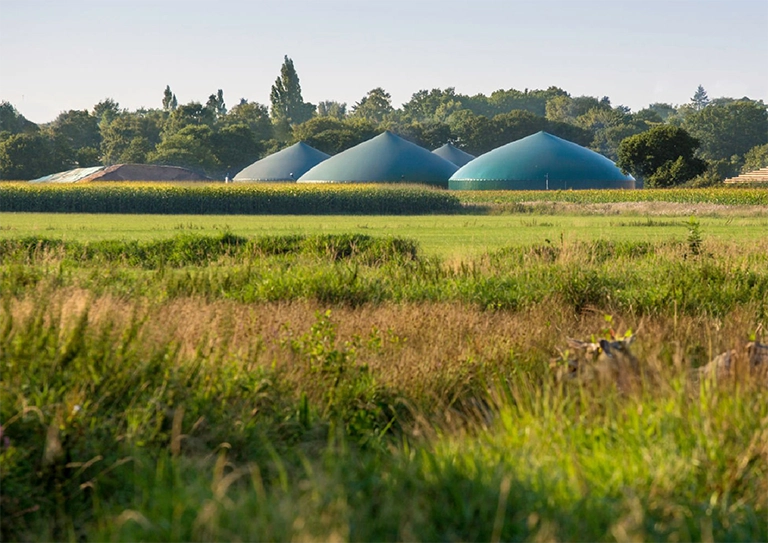Kalfrisa is a strategic partner in biogas upgrading, thanks to its extensive experience in the design and implementation of RTOs (Regenerative Thermal Oxidizers).
Where does biogas come from?
It is a combustible gas produced through the anaerobic decomposition (without oxygen) of organic matter by the action of microorganisms. This process occurs naturally in places such as landfills, swamps, or in facilities specifically designed to produce biogas, such as anaerobic digestion plants. In facilities designed specifically for biogas production, this decomposition takes place in a closed system called a biodigester.
The gas produced (biogas) is collected through pipelines or storage systems. It can then be purified to separate the methane (biomethane) and improve its quality as a fuel.
Biogas is mainly composed of Methane (CH₄): 50–70%, which is its primary combustible component.
When this biogas has a high methane content, it becomes a renewable and sustainable energy source that can be used to generate electricity, heat, or even as vehicle fuel once purified. To achieve this, it must be upgraded by removing undesirable compounds such as CO2, NH3, H₂S, and other volatile organic compounds (VOCs).
Biogas Upgrading: Biomethane
Biogas enrichment (upgrading) is the process by which the methane (CH₄) concentration in biogas is increased to produce biomethane, removing unwanted components. The result is a gas with quality similar to natural gas, which can be injected into distribution networks or used as vehicle fuel.
The stages of the process are:
- Biogas production: It is generated from the anaerobic decomposition of organic matter in a biodigester.
- Pretreatment: Hydrogen sulfide (H₂S) and water are removed to prevent corrosion and damage to the equipment.
- VOC removal: An RTO (Regenerative Thermal Oxidizer) uses high temperatures to oxidize VOCs (such as siloxanes and terpenes), converting them into CO₂ and water. This protects equipment and improves the quality of the biogas.
- Removal of CO₂: CO₂ is separated from the biogas using technologies such as chemical absorption, PSA (Pressure Swing Adsorption), or separation membranes.
- Final conditioning: Any residual water is removed, and the biomethane is compressed for storage and use.
- Biomethane use: Biomethane can be injected into the natural gas grid, used to generate electricity, or utilized as vehicle fuel.
- High efficiency in contaminant removal: Can eliminate more than 99% of the VOCs present in the biogas.
- Energy savings: Thanks to regenerative heat exchange, the system is energy-efficient.
- Compatibility with other processes: The RTO works well in conjunction with other purification stages, such as H₂S removal or CO₂ separation.
- Improved biomethane quality: Removes contaminants that interfere with the efficiency and quality of the final biomethane.

